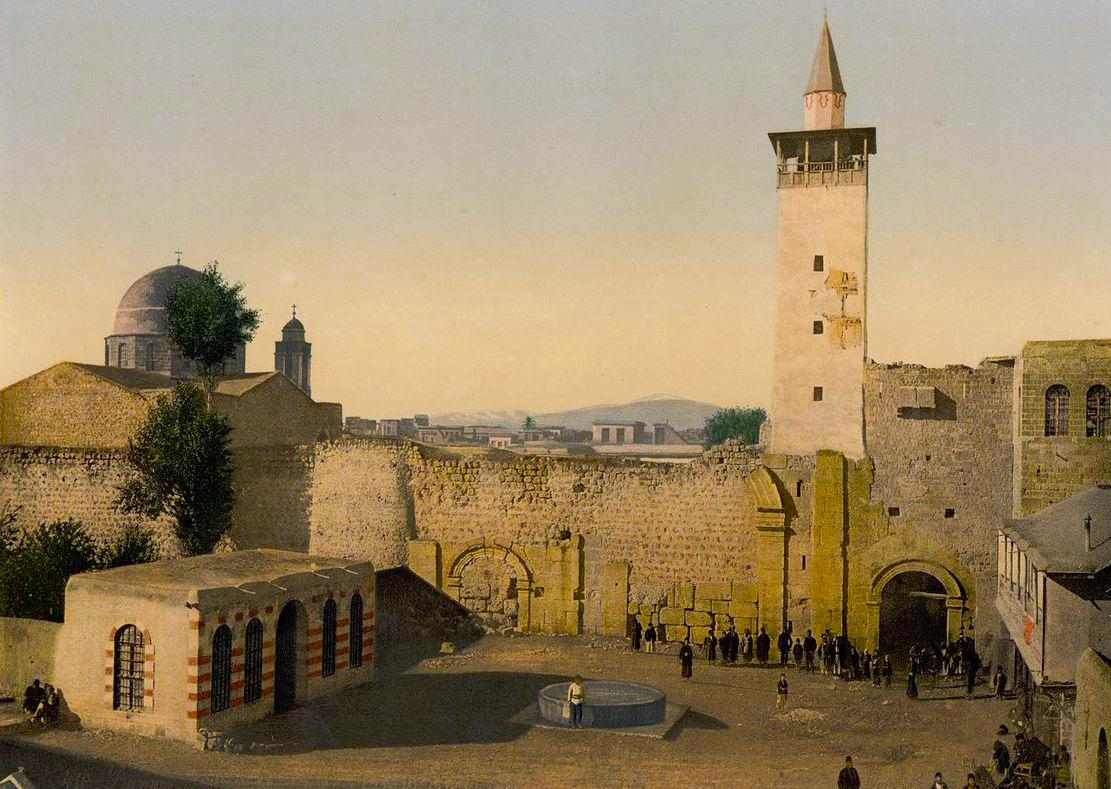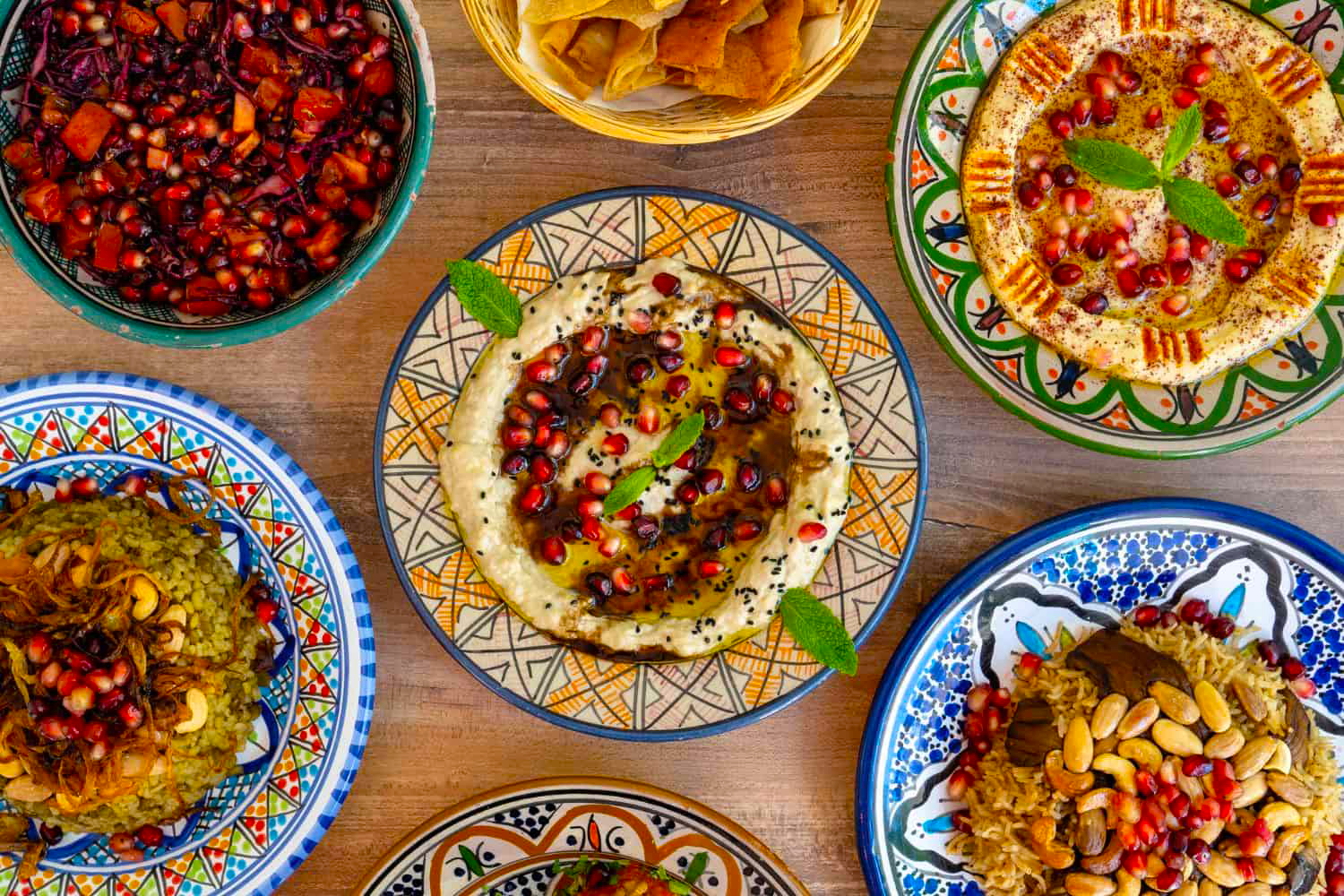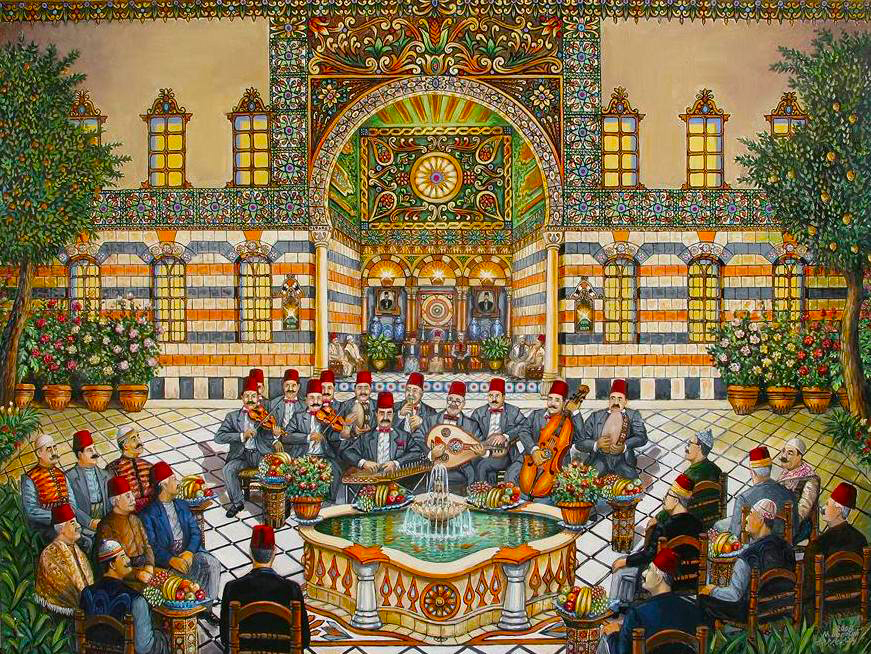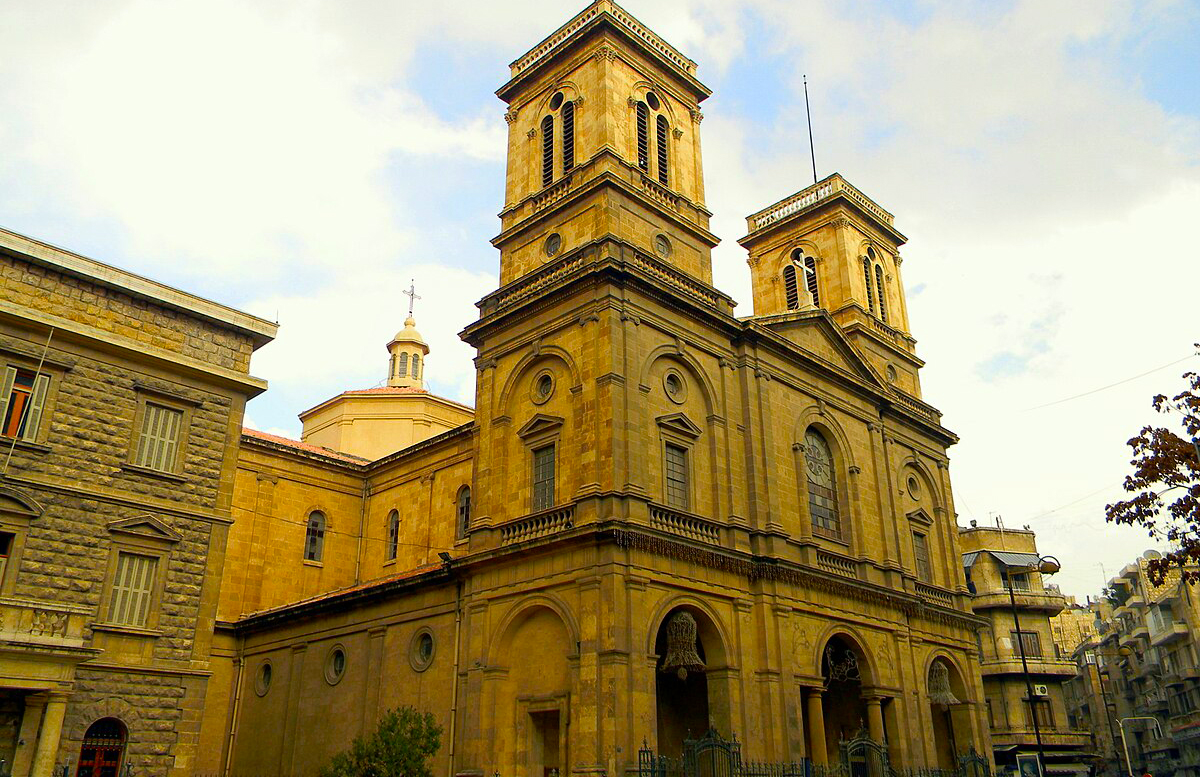Aleppo, one of the oldest continuously inhabited cities in the world, is celebrated not only for its Islamic heritage but also for its deep-rooted Christian history. For centuries, the city was home to a vibrant mosaic of Christian communities—including Armenian, Greek Orthodox, Greek Catholic, Maronite, and Syriac groups—each leaving behind stunning churches that continue to tell stories of faith, endurance, and artistry.
Despite challenges over the centuries, including war, fire, and most recently, civil conflict, many of Aleppo’s historical churches still stand, preserving the city’s legacy as a center of religious tolerance and multiculturalism. This article explores some of the most notable churches—those you mentioned and more—offering travelers and history lovers a guide to Aleppo’s rich Christian heritage.
Aleppo’s Historical Churches | Smart Chart
| Church Name | Era & Year | Key Notes |
|---|---|---|
| Catholic Church of Saint Asia al-Hakim (كنيسة القديس آسيا الحكيم) | 20th century – 1930s | Known for its unique architecture and Catholic liturgy in Arabic |
| Armenian Orthodox Church of Forty Martyrs (كنيسة الأربعين شهيدًا للأرمن الأرثوذكس) | 15th century – 1491 | Located in Jdeydeh; iconic bell tower, historic heart of Armenian community |
| The Greek Catholic Church of Our Lady (كنيسة السيدة للروم الكاثوليك) | 19th century – 1848 | Baroque style with a beautiful dome; still active, located in old Aleppo |
| The Armenian Catholic Church (كنيسة الأرمن الكاثوليك) | 19th century – 1823 | Elegant interior; symbol of Armenian Catholic presence in Aleppo |
| Mar Assia al-Hakim Syriac Catholic Church (كنيسة مار آسيا الحكيم للسريان الكاثوليك) | 15th century – Rebuilt 1970s | Historic Syriac church; originally from medieval period, rebuilt after fire |
| Maronite Cathedral of Saint Elijah (كاتدرائية مار الياس المارونية) | 19th century – 1873 | Main Maronite church in Aleppo; neo-Gothic influences |
| Church of Saint Michael Syriac Orthodox (كنيسة مار ميخائيل للسريان الأرثوذكس) | 19th century – 1814 | Modest in size; important center for Syriac Orthodox liturgy |
| Latin Church of Saint Francis (كنيسة القديس فرنسيس للاتين) | 20th century – 1937 | Franciscan mission church with attached convent and school |
| Church of Saint George – Greek Orthodox (كنيسة مار جرجس للروم الأرثوذكس) | 19th century – 1870s | Large community church with rich iconography and interior murals |
| Evangelical National Church (الكنيسة الإنجيلية الوطنية بحلب) | 20th century – 1923 | Founded by Protestant missionaries; damaged during conflict, now active again |
| Church of the Presentation of the Virgin (كنيسة دخول السيدة إلى الهيكل) | Byzantine roots – rebuilt 19th century | Located near Citadel; small but historically significant Greek Orthodox site |
| Church of Saint Gregory the Illuminator (كنيسة القديس غريغوريوس المنور) | 20th century – 1933 | Armenian Apostolic; named after the founder of Armenian Christianity |
| Chaldean Catholic Church of Aleppo (كنيسة الكلدان الكاثوليك بحلب) | 20th century – 1920s | Serves Chaldean Catholic community; traditional Eastern liturgy |
| Church of the Holy Trinity – Armenian Evangelical (كنيسة الثالوث الأقدس الأرمنية الإنجيلية) | 20th century – 1923 | Evangelical Armenian heritage; near old Armenian quarter |
Catholic Church of Saint Asia al-Hakim (كنيسة القديس آسيا الحكيم)
Located in the Al-Farafira district, the Catholic Church of Saint Asia al-Hakim is a unique gem within the Christian quarters of Old Aleppo. This church belongs to the Melkite Greek Catholic Church, which follows Byzantine rites while remaining in full communion with the Roman Catholic Church.
Named after Asia al-Hakim, an early Christian martyr and saint, the church is modest in size but holds significant historical and spiritual importance. Its structure reflects a combination of local Syrian and Byzantine architectural elements: a simple stone exterior hides a warm, welcoming interior with arched ceilings, painted icons, and traditional pews.
The church has served as a spiritual home for generations of Aleppine Catholics, offering a glimpse into the city’s lesser-known but resilient Eastern Catholic communities.
Armenian Orthodox Church of the Forty Martyrs (كنيسة الأربعين شهيد)
Perhaps the most iconic Christian church in Aleppo, the Armenian Orthodox Church of the Forty Martyrs stands in the old Armenian quarter, known as Jdeydeh. Built in 1491, this church is dedicated to the Forty Martyrs of Sebaste, Roman soldiers who were executed for their Christian faith.
Architecturally, it is a magnificent example of traditional Armenian ecclesiastical design, with its pointed dome, stone bell tower, and cross-shaped layout. Inside, visitors will find rich wood carvings, a beautifully decorated altar, and several religious relics and manuscripts.
The church served as the spiritual heart of Aleppo’s Armenian Apostolic community for over five centuries. It was damaged during recent conflicts but is undergoing careful restoration with the help of the Armenian Patriarchate and UNESCO.
The Greek Catholic Church of Our Lady (كنيسة السيدة للروم الكاثوليك)
Located just off the Al-Tilal Street in central Aleppo, The Greek Catholic Church of Our Lady (Sayyidat al-Roum al-Katholik) is another stunning testament to the city’s Byzantine Catholic tradition. Built in the 19th century, the church features a grand interior adorned with Byzantine-style frescoes, gold-plated icons, and marble flooring.
Its large nave and high ceiling make it one of the largest Eastern Catholic churches in Aleppo. The church is particularly important during Christian holidays, drawing large congregations for Christmas, Easter, and the Feast of the Virgin Mary.
Before the war, it was also a center of interfaith dialogue and musical concerts, given its excellent acoustics and beautiful architecture.
Armenian Catholic Church (كنيسة الأرمن الكاثوليك)
The Armenian Catholic Church of Aleppo is another religious and cultural treasure found in the Christian quarter of Jdeydeh. It was built in the 19th century, after the Armenian Catholic community split from the Apostolic Church and aligned with the Vatican, maintaining Eastern rites while recognizing the Pope.
The church is noted for its beautiful iconostasis, high arched windows, and peaceful courtyard surrounded by trees and community buildings. It has served as both a place of worship and a cultural hub, housing a small library and community center.
Though the church was also affected by recent conflicts, restoration efforts are bringing it back to life, ensuring that the Armenian Catholic heritage remains a visible part of Aleppo’s religious identity.
Additional Historical Churches in Aleppo
Maronite Cathedral of Saint Elijah (كاتدرائية مار إلياس المارونية)
Built in the mid-19th century, this church is the central cathedral for Aleppo’s Maronite Catholic community. The Maronites, who originate from Lebanon and Syria, follow Eastern rites but are in full communion with the Vatican.
The cathedral, with its neoclassical design, tall bell towers, and arched portico, dominates the surrounding neighborhood. Inside, the cathedral features marble altars, Arabic and Syriac inscriptions, and large stained-glass windows.
The church has seen heavy damage during the war, but efforts to restore it are well underway, symbolizing the Maronite community’s commitment to resilience and faith.
Church of Saint Elijah the Prophet (كنيسة مار إلياس النبي للسريان الكاثوليك)
This historic church belongs to the Syriac Catholic Church, which uses the Syriac-Aramaic language in its liturgy—a direct descendant of the language spoken by Jesus.
The Church of Saint Elijah the Prophet is located in the Old City and was constructed in the 17th century. Its modest exterior hides an awe-inspiring wooden altar, handwritten Syriac manuscripts, and a rare collection of liturgical vestments and chalices.
The Syriac community in Aleppo has always been small in number but rich in culture and liturgical tradition. The church continues to be an active center of worship and cultural preservation.
Church of the Dormition of the Theotokos (كنيسة رقاد السيدة)
This church belongs to the Greek Orthodox Patriarchate of Antioch, one of the oldest Christian institutions in the world. The Dormition of the Theotokos—also known as the “Falling Asleep of the Virgin Mary”—is a major feast in Eastern Christianity.
The church is known for its dome with Byzantine mosaics, marble columns, and traditional Byzantine-style iconography. Services are conducted in Arabic and Greek, reflecting Aleppo’s long-standing connection with both Eastern and local Christian traditions.
Saint George’s Syrian Orthodox Church (كنيسة مار جرجس للسريان الأرثوذكس)
Another jewel of Aleppo’s Christian past is Saint George’s Church, serving the Syriac Orthodox community. Built in the early 20th century on the foundations of older structures, the church is named after St. George the Martyr, a figure venerated across many Christian denominations.
The church celebrates ancient West Syriac rites, including chants and liturgies preserved from early Christianity. It is a reminder of Aleppo’s deep-rooted connection to Syriac heritage, which has flourished here for centuries.
The Jdeydeh Quarter: Christian Aleppo’s Beating Heart
Most of Aleppo’s historical churches are concentrated in the Jdeydeh quarter, a district established in the 15th century by Christian merchants. Jdeydeh is a pedestrian-friendly area with stone-paved streets, Ottoman-era houses, and interlinked religious buildings from various denominations.
Before the war, it was one of Aleppo’s liveliest cultural zones, filled with artisan shops, bookstores, restaurants, and music events held in courtyards and church halls. Efforts are now underway to revive Jdeydeh, focusing on the restoration of its churches and residential homes.
Christianity in Aleppo: A Living Heritage
Aleppo’s Christian population, though reduced in recent years due to migration and war, continues to uphold its traditions. Sunday masses, Christmas and Easter celebrations, and community festivals are still observed in many churches, some of which also run schools, charities, and cultural associations.
The churches are more than places of worship—they’re guardians of identity, centers of education, and witnesses to coexistence.
Visiting Aleppo’s Churches: What Tourists Should Know
- Dress respectfully: Modest clothing is recommended, especially during services.
- Ask before taking photos, particularly if services are underway or if icons are present.
- Go with a guide: Many churches have deep historical stories not explained on site.
- Best time to visit: Spring and fall are the most pleasant seasons. Holidays like Easter or the Feast of the Virgin offer the chance to witness authentic local traditions.
Final Thoughts
Aleppo’s historical churches are sacred footprints of a city that has been a beacon of faith, diversity, and resilience for centuries. From the Armenian and Syriac to the Greek and Maronite communities, each church tells a story not only of prayer but of cultural survival and artistic expression.
In the echo of bells and the quiet shadows of candlelit altars, one can still feel the heartbeat of Aleppo’s Christian soul. For travelers, historians, and spiritual seekers alike, exploring these churches is a profound journey through the layers of one of the world’s oldest urban civilizations.



